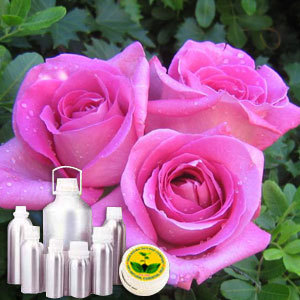Botonical Name | : | Rosa Centifolia | |
CAS # | : | 8007-01-0 | |
Country of Origin | : | India | |
Color & Odor | : | Yellow to Brownish Liquid and Deep sweet Rosy very Floral odor | |
Solubility | : | Soluble in alcohol and oils, Insoluble in water | |
Specific Gravity | : | 0.970 - 0.995 @ 25°C | |
Optical Rotation | : | (-1) – (4) @ 20ºC | |
Refractive Index | : | 1.505 - 1.520 @ 20°C | |
Flash Point | : | 97 °C | |
Major Constituents | : | Citronellol, Phenyl-ethyl, geraniol, farnesol | |
Plant Part Used | : | Fresh Flowers | |
Extraction Method | : | Steam Distillation |
DESCRIPTION:
R. centifolia rose which is the hybrid version of cabbage rose, is the source of Rose De Mai Oil. Available in refined and unadulterated form, this oil is basically the aromatic compounds of freshly picked cabbage rose. Hydrocarbon solvent based method is followed for the extraction of this oil. CONSTITUENTS:
The oil contains compounds like linalool, geraniol, nerol, geraniol, Citronellol, Phenyl-ethyl alcohol, farnesol , 2-phenylmenthyl acetate, methyl eugenol, citronellyl acetate, eugenol and rose oxide. AROMATIC SUMMARY / NOTE / STRENGTH OF AROMA:
Rose De Mai Oil has strong, pleasant and floral smell that reminds about honey. BLENDS WITH:
This oil can be mixed with the extracted oils of R. gallica and R. x centifolia. COMMON NAMES:
This oil is popularly referred as Rose oil and Rose leaf oil. USES:
Rose De Mai Oil is derived from rose flowers via steam distillation method that involves utilization of unadulterated alcohol and semi solid mass form of herbs (concretes). The alcohol used in distillation technique is instrumental in absorption of scented content of rose oil from concretes in order to provide fresh and clear rose oil. The obtained oil has wide applications in perfume making industry. Enriched with a number of active compounds, this light weight oil is also required to formulate skin care crèmes. The antioxidant enriched content of this oil is quickly absorbed by skin. 


































